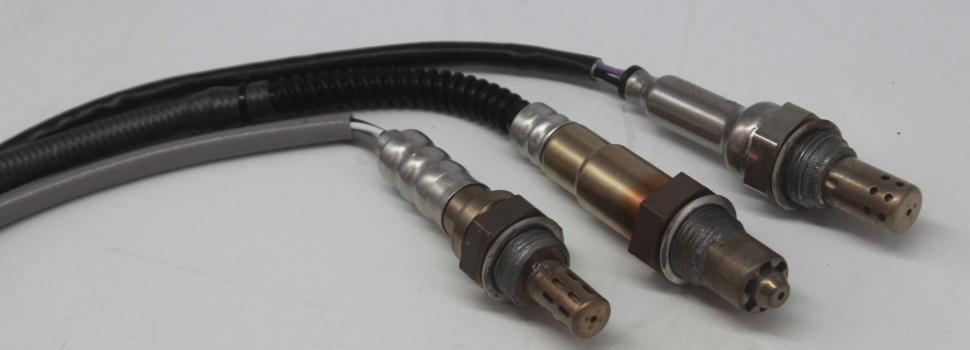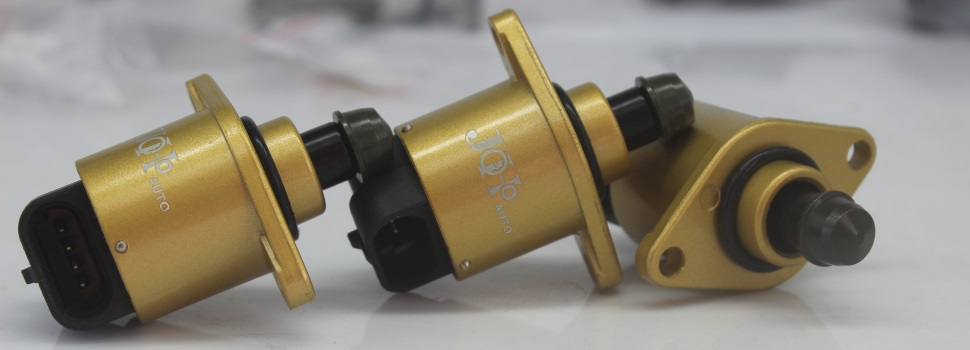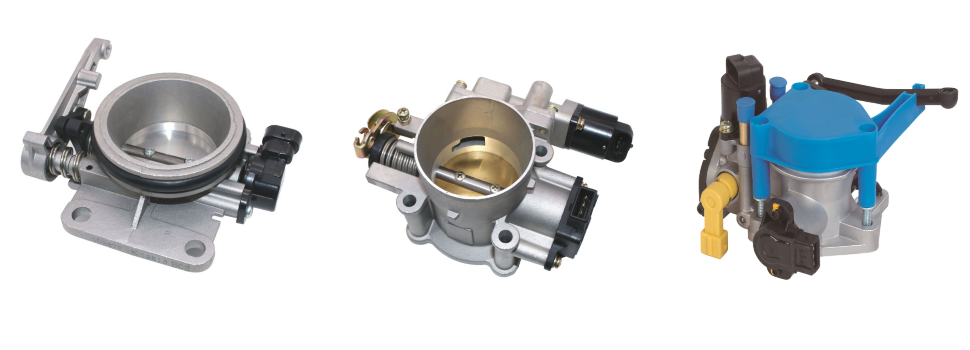Local anesthetic such as lidocaine or bupivacaine should be injected within the roof of the abscess where the incision will be made. About 1 in 15 of these women can develop breast abscesses. 98 0 obj <>stream Clean area with soap and water in shower. In these cases, systemic antifungals with coverage of Candida, Aspergillus, and Zygomycetes should be considered.28,29,37, Most wounds can be managed by primary care clinicians in the outpatient setting. If your doctor placed gauze wick packing inside of the abscess cavity, your doctor will need to remove or repack this within a few days. <> Ask the patient to return to clinic only as needed. In general an abscess must open and drain in order for it to improve. A Cochrane review did not establish the superiority of any one pathogen-sensitive antibiotic over another in the treatment of MRSA SSTI.35 Intravenous antibiotics may be continued at home under close supervision after initiation in the hospital or emergency department.36 Antibiotic choices for severe infections (including MRSA SSTI) are outlined in Table 6.5,27, For polymicrobial necrotizing infections; safety of imipenem/cilastatin in children younger than 12 years is not known, Common adverse effects: anemia, constipation, diarrhea, headache, injection site pain and inflammation, nausea, vomiting, Rare adverse effects: acute coronary syndrome, angioedema, bleeding, Clostridium difficile colitis, congestive heart failure, hepatorenal failure, respiratory failure, seizures, vaginitis, Children 3 months to 12 years: 15 mg per kg IV every 12 hours, up to 1 g per day, Children: 25 mg per kg IV every 6 to 12 hours, up to 4 g per day, Children: 10 mg per kg (up to 500 mg) IV every 8 hours; increase to 20 mg per kg (up to 1 g) IV every 8 hours for Pseudomonas infections, Used with metronidazole (Flagyl) or clindamycin for initial treatment of polymicrobial necrotizing infections, Common adverse effects: diarrhea, pain and thrombophlebitis at injection site, vomiting, Rare adverse effects: agranulocytosis, arrhythmias, erythema multiforme, Adults: 600 mg IV every 12 hours for 5 to 14 days, Dose adjustment required in patients with renal impairment, Rare adverse effects: abdominal pain, arrhythmias, C. difficile colitis, diarrhea, dizziness, fever, hepatitis, rash, renal insufficiency, seizures, thrombophlebitis, urticaria, vomiting, Children: 50 to 75 mg per kg IV or IM once per day or divided every 12 hours, up to 2 g per day, Useful in waterborne infections; used with doxycycline for Aeromonas hydrophila and Vibrio vulnificus infections, Common adverse effects: diarrhea, elevated platelet levels, eosinophilia, induration at injection site, Rare adverse effects: C. difficile colitis, erythema multiforme, hemolytic anemia, hyperbilirubinemia in newborns, pulmonary injury, renal failure, Adults: 1,000 mg IV initial dose, followed by 500 mg IV 1 week later, Common adverse effects: constipation, diarrhea, headache, nausea, Rare adverse effects: C. difficile colitis, gastrointestinal hemorrhage, hepatotoxicity, infusion reaction, Adults and children 12 years and older: 7.5 mg per kg IV every 12 hours, For complicated MSSA and MRSA infections, especially in neutropenic patients and vancomycin-resistant infections, Common adverse effects: arthralgia, diarrhea, edema, hyperbilirubinemia, inflammation at injection site, myalgia, nausea, pain, rash, vomiting, Rare adverse effects: arrhythmias, cerebrovascular events, encephalopathy, hemolytic anemia, hepatitis, myocardial infarction, pancytopenia, syncope, Adults: 4 mg per kg IV per day for 7 to 14 days, Common adverse effects: diarrhea, throat pain, vomiting, Rare adverse effects: gram-negative infections, pulmonary eosinophilia, renal failure, rhabdomyolysis, Children 8 years and older and less than 45 kg (100 lb): 4 mg per kg IV per day in 2 divided doses, Children 8 years and older and 45 kg or more: 100 mg IV every 12 hours, Useful in waterborne infections; used with ciprofloxacin (Cipro), ceftriaxone, or cefotaxime in A. hydrophila and V. vulnificus infections, Common adverse effects: diarrhea, photosensitivity, Rare adverse effects: C. difficile colitis, erythema multiforme, liver toxicity, pseudotumor cerebri, Adults: 600 mg IV or orally every 12 hours for 7 to 14 days, Children 12 years and older: 600 mg IV or orally every 12 hours for 10 to 14 days, Children younger than 12 years: 10 mg per kg IV or orally every 8 hours for 10 to 14 days, Common adverse effects: diarrhea, headache, nausea, vomiting, Rare adverse effects: C. difficile colitis, hepatic injury, lactic acidosis, myelosuppression, optic neuritis, peripheral neuropathy, seizures, Children: 10 to 13 mg per kg IV every 8 hours, Used with cefotaxime for initial treatment of polymicrobial necrotizing infections, Common adverse effects: abdominal pain, altered taste, diarrhea, dizziness, headache, nausea, vaginitis, Rare adverse effects: aseptic meningitis, encephalopathy, hemolyticuremic syndrome, leukopenia, optic neuropathy, ototoxicity, peripheral neuropathy, Stevens-Johnson syndrome, For MSSA, MRSA, and Enterococcus faecalis infections, Common adverse effects: headache, nausea, vomiting, Rare adverse effects: C. difficile colitis, clotting abnormalities, hypersensitivity, infusion complications (thrombophlebitis), osteomyelitis, Children: 25 mg per kg IM 2 times per day, For necrotizing fasciitis caused by sensitive staphylococci, Rare adverse effects: anaphylaxis, bone marrow suppression, hypokalemia, interstitial nephritis, pseudomembranous enterocolitis, Adults: 2 to 4 million units penicillin IV every 6 hours plus 600 to 900 mg clindamycin IV every 8 hours, Children: 60,000 to 100,000 units penicillin per kg IV every 6 hours plus 10 to 13 mg clindamycin per kg IV per day in 3 divided doses, For MRSA infections in children: 40 mg per kg IV per day in 3 or 4 divided doses, Combined therapy for necrotizing fasciitis caused by streptococci; either drug is effective in clostridial infections, Adverse effects from penicillin are rare in nonallergic patients, Common adverse effects of clindamycin: abdominal pain, diarrhea, nausea, rash, Rare adverse effects of clindamycin: agranulocytosis, elevated liver enzyme levels, erythema multiforme, jaundice, pseudomembranous enterocolitis, Children: 60 to 75 mg per kg (piperacillin component) IV every 6 hours, First-line antimicrobial for treating polymicrobial necrotizing infections, Common adverse effects: constipation, diarrhea, fever, headache, insomnia, nausea, pruritus, vomiting, Rare adverse effects: agranulocytosis, C. difficile colitis, encephalopathy, hepatorenal failure, Stevens-Johnson syndrome, Adults: 10 mg per kg IV per day for 7 to 14 days, For MSSA and MRSA infections; women of childbearing age should use 2 forms of birth control during treatment, Common adverse effects: altered taste, nausea, vomiting, Rare adverse effects: hypersensitivity, prolonged QT interval, renal insufficiency, Adults: 100 mg IV followed by 50 mg IV every 12 hours for 5 to 14 days, For MRSA infections; increases mortality risk; considered medication of last resort, Common adverse effects: abdominal pain, diarrhea, nausea, vomiting, Rare adverse effects: anaphylaxis, C. difficile colitis, liver dysfunction, pancreatitis, pseudotumor cerebri, septic shock, Parenteral drug of choice for MRSA infections in patients allergic to penicillin; 7- to 14-day course for skin and soft tissue infections; 6-week course for bacteremia; maintain trough levels at 10 to 20 mg per L, Rare adverse effects: agranulocytosis, anaphylaxis, C. difficile colitis, hypotension, nephrotoxicity, ototoxicity. See permissionsforcopyrightquestions and/or permission requests. Read on to learn more about this procedure, the recovery time, and the likelihood of recurrence. After I&D, instruct the patient to watch for signs of cellulitis or recollection of pus. Within a week, your doctor will remove the dressing and any inside packing to examine the wound during a follow-up appointment. If drainage persists then repack the wound and have the patient return in 24 to 48 hours for a wound check. Community-associated methicillin-resistant Staphylococcus aureus (CA-MRSA) skin infections. Incision and Drainage of Abcess. Diwan Z, Trikha S, Etemad-Shahidi S, Virmani S, Denning C, Al-Mukhtar Y, Rennie C, Penny A, Jamali Y, Edwards Parrish NC. Change thedressing if it becomes soaked with blood or pus. Superficial mild infections can be treated with topical antibiotics; other infections require oral or intravenous antibiotics. A skin incision is made with a No.. Are there other treatments that can be used to heal skin abscesses? endobj %%EOF For example, a perianal abscess almost exclusively general anaesthetic (GA) or spinal. 2015 Jul;17(4):420-32. doi: 10.1017/cem.2014.52. What is an abscess incision and drainage procedure? Management is determined by the severity and location of the infection and by patient comorbidities. 8600 Rockville Pike 0. Straight or jagged skin tear; caused by blunt trauma (e.g., fall, collision), Little to profuse bleeding; ragged edges may not readily align, Sutures, stapling, tissue adhesive, bandage, or skin closure tape, Scraped skin caused by friction against a rough surface, Minimal bleeding; first- (epidermis only), second- (to dermis), or third-degree (to subcutaneous skin) injury, Skin irrigation and removal of foreign bodies, topical antibiotic, occlusive dressing; third-degree injuries may require topical and oral antibiotics and consultation with plastic surgeon for skin grafting, Broken skin caused by penetration of sharp object, Typically more bleeding internally than externally, causing skin discoloration, High-pressure irrigation and removal of foreign bodies, tetanus prophylaxis with possible antibiotics; human bites to the hand require prophylactic antibiotics; plantar puncture wounds are susceptible to pseudomonal infection, Dynamic injury, may progress two to three days after initial injury, Depends on degree and size; in general, first-degree burns do not require therapy (topical nonsteroidal anti-inflammatory drugs and aloe vera can be helpful); deep second- and third-degree burns require topical antimicrobials and referral to burn subspecialist, Poorly controlled diabetes mellitus or peripheral vascular disease; immunocompromised, Severe or circumferential burns, or burns to the face or appendages, Wounds affecting joints, bones, tendons, or nerves. While the number of studies is small, there is data to support the elimination of abscess packing and routine avoidance of antibiotics post-I&D in an immunocompetent patient; however, antibiotics should be considered in the presence of high risk features. You have a fever or chills. A meta-analysis of seven RCTs involving 1,734 patients with simple nonbite wounds found that those who received systemic antibiotics did not have a significantly lower incidence of infection compared with untreated patients.20 An RCT of 922 patients undergoing sterile surgical procedures found no increased incidence of infection and similar healing rates with topical application of white petrolatum to the wound site compared with antibiotic ointment.21 However, several studies have supported the use of prophylactic topical antibiotics for minor wounds. Regardless of the . Its usually triggered by a bacterial infection. We avoid using tertiary references. You may do this in the shower. You have questions or concerns about your condition or care. Tips and Tricks When doing a field block, after the first injection always reinsert the needle through anesthetized skin to minimize the number of painful pricks. Prophylactic systemic antibiotics are not necessary for healthy patients with clean, noninfected, nonbite wounds. A small abscess with little pain, swelling, or other symptoms can be watched for a few days and treated with a warm compress to see if it recedes. The incision site may drain pus for a couple of days after the procedure. An abscess is an infected fluid collection within the body. An abscess is an area under the skin where pus collects. Once the packing is removed, you should wash the area in the shower, or clean the area as directed by your healthcare provider. Always consult your healthcare provider to ensure the information displayed on this page applies to your personal circumstances. Incision and drainage are the standard of care for breast abscesses. First, depending on the size and depth of the cyst or abscess, the physician will bandage the wound with sterile gauze or will insert a drain to allow the abscess to continue draining as it heals. After the incision and drainage, gauze packing may be inserted into the opening. Do not keep packing in place more than 3 Current wound care practices recommend maintaining a moist wound bed to aid in healing.7,8 Wounds should be occluded with an appropriate dressing and reassessed periodically for optimal moisture levels. Make an incision directly over the center of the cutaneous abscess; the incision should be oriented along the long axis of the fluid collection. Simply use a dressing gauze that can be purchased from any pharmacy . You may be able to help a small abscess start to drain by applying a hot, moist compress to the affected area. The abscess is left open but covered with a wound dressing to absorb any more pus that is produced initially after the procedure. It can be caused by conditions that range from mild, Learn all about dark circles under your eyes. Inspect incision and dressings. Older age, cardiopulmonary or hepatorenal disease, diabetes mellitus, debility, immunosenescence or immunocompromise, obesity, peripheral arteriovenous or lymphatic insufficiency, and trauma are among the risk factors for SSTIs (Table 2).911 Outbreaks are more common among military personnel during overseas deployment and athletes participating in close-contact sports.12,13 Community-acquired MRSA causes infection in a wide variety of hosts, from healthy children and young adults to persons with comorbidities, health care professionals, and persons living in close quarters. Cutler Bay Urgent Care. The most reliable way to remove a cyst is to have your doctor do it. ariahealth.org/programs-and-services/radiology/interventional-radiology/abscess-and-fluid-drainage, saem.org/cdem/education/online-education/m3-curriculum/group-emergency-department-procedures/abscess-incision-and-drainage, mayoclinic.org/diseases-conditions/mrsa/symptoms-causes/syc-20375336, Debra Rose Wilson, Ph.D., MSN, R.N., IBCLC, AHN-BC, CHT, How to Get Rid of a Boil: Treating Small and Large Boils, Identifying boils: Differences from cysts and carbuncles, Is It a Boil or a Pimple? Severe burns and wounds that cover large areas of the body or involve the face, joints, bone, tendons, or nerves should generally be referred to wound care specialists. Initial antimicrobial choice is empiric, and in simple infections should cover Staphylococcus and Streptococcus species. The incision needs to be long enough and deep enough to allow access to the abscess cavity later, when you explore the abscess cavity. 2022 Fairview Health Services. Along with the causes of dark, Split nails are often caused by an injury such as a stubbed toe or receiving a severe blow to a finger or thumb. Abscess Incision and Drainage Procedure Hold the scalpel between the thumb and forefinger to make initial entry directly into the abscess. Abscess Drainage. The care after abscess I & D, as well as recovery time, will depend on the infection's severity and where it occurred. Facebook; Twitter; . If a gauze packing was placed inside the abscess pocket, you may be told to remove it yourself. For very deep abscesses, the doctor might pack the abscess site with gauze that needs to be removed after a few days. This can help speed up the healing process. None of the studies demonstrated a difference in treatment failure rates, recurrence rates, or need for secondary interventions in non-packed wounds; however, packing groups had more pain. U[^Y.!JEMI5jI%fb]!5=oX)>(Llwp6Y!Z,n3y8 gwAlsQrsH3"YLa5 5oS)hX/,e dhrdTi+? The abscess after some time will look raw and will at some point stop draining pus. Mohamedahmed AYY, Zaman S, Stonelake S, Ahmad AN, Datta U, Hajibandeh S, Hajibandeh S. Langenbecks Arch Surg. Incision and drainage of abscesses in a healthy host may be the only therapeutic approach necessary. An infected wound will disrupt tissue granulation and delay healing. The most common mistake made when incising an abscess is not to make the incision big enough. Certain medical conditions or other factors may increase your risk of perineal abscesses. stream Discussion: An abscess is sometimes called a boil. Clean area with soap and water in shower. One solution is to perform abscess drainage as a day- Search dates: February 1, 2014 to September 19, 2014. Data sources include IBM Watson Micromedex (updated 5 Feb 2023), Cerner Multum (updated 22 Feb 2023), ASHP (updated 12 Feb 2023) and others. Incision and drainage of the skin abscess either under local or general anaesthesia remain the gold standard of treatment [2].
Lucille Ball House Beverly Hills Address,
Tj Chumps Nutrition Information,
Companies To Boycott 2021,
Articles C





